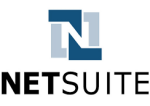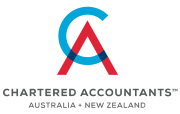
FBT year-end checklist
March 31 marks the end of the 2021/2022 fringe benefits tax (FBT) year which commenced 1 April 2021. It’s time now for employers and their advisors to turn their attention to instances where non-cash benefits have been provided to employees, and also where private expenses have been paid on their behalf.
Although it will generally fall to your accountant to prepare the FBT return, from your software file or other records, all of the instances where you have provided employees and/or their associates (e.g. spouse) with a potential fringe benefit may not always be apparent to them. To assist you in bringing these potential benefits to the attention of your accountant, following is a general checklist (non-exhaustive).
CARS
- Did you provide or make available a car that your business (or an associate of the business) owned or leased, to an employee or their associate for private purposes?
Exemptions include minor, infrequent and irregular non-work-related use by an employee of certain commercial vehicles.
- Did you as an employer reimburse expenses of an employee in relation to a car they owned or leased?
Exemptions include where the business compensates the employee on a cents per km basis for estimated travel and where the car has not been used for private purposes.
LOANS
- Did your business provide a loan to an employee or their associate?
Exemptions include where the loan is strictly related to meeting an employment expense (which must be incurred within sixth months of the loan being made). Exemptions also include loans made by private companies to employees who are also shareholders but the loan is Division 7A compliant.
DEBT WAIVER
- Did your business release an employee or their associate from paying an outstanding debt?
An exemption applies where the debt in question is genuinely written off as a bad debt (as distinct from waived for employment or personal reasons).
HOUSING
- Did your business or an associated entity provide an employee or their associate with the right to use accommodation by lease or licence?
The benefit may be exempt in the event that it relates to a remote area.
LIVING AWAY FROM HOME ALLOWANCE (LAFHA)
- Did you pay an employee an allowance to compensate them for private non-deductible expenses because they are required to live away from their usual place of residence for work?
Strict exemption conditions can apply which your accountant can walk you through.
EXPENSE PAYMENTS
- Did your business reimburse an employee or pay a third-party expense of theirs?
Exemptions include where the expense would have been otherwise deductible to the employee because it was work-related.
CAR PARKING
- Did you pay for an employee’s car parking expenses or provide them with a car park during the year?
Various exemptions apply including where the benefit is for a disabled person, or provided by small businesses or certain non-profit employers, or the minor benefit exemption applies.
ENTERTAINMENT
- Did your business provide an employee or associate (or in some cases third-parties) with entertainment by way of food, drink or accommodation in connection with this?
- Did your business provide an employee or their associate with a corporate box, a boat or plane for the purpose of providing entertainment, or other premises for the purpose of providing entertainment?
Record keeping
Keeping good business records is important for a number of reasons. It assists you to:
■ comply with your tax and superannuation obligations
■ gain a greater insight into the financial health of your business, enabling you to make informed decisions
■ manage your cashflow
■ demonstrate your financial position to prospective lenders, and also potential buyers of your business.
ATO REQUIREMENTS
Broadly, the ATO requires that:
■ you keep most records for five years from when you obtained the records, or completed the transactions or acts that they relate to – whichever is the later
■ you be able to show the ATO your records if they ask for them
■ your records must be in English or be able to be easily converted to English.
DIGITAL RECORDS
The ATO is reminding business owners that you can keep your records (paper/hard copies) digitally. The ATO accepts images of business paper records saved on a digital storage medium, provided the digital copies are true and clear reproductions of the original paper records and meet the standard record keeping requirements.
Once you have saved an image of your original paper records, you don’t have to keep the paper records unless a particular law or regulation requires you to.
However, if you enter information (for example, supplier information, date, amount and GST) from digital or paper records into your accounting software, you still need to keep a copy of the actual record, either digitally or on paper. Some accounting software packages may do both your accounting as well as your record keeping.
STORAGE OPTIONS
1. Cloud
If you use cloud storage, either through your accounting software or through a separate service provider, eg, Google Drive, Microsoft Onedrive or Dropbox, ensure:
■ the record storage meets the record-keeping requirements
■ you download a complete copy of any records stored in the cloud before you change software provider and lose access to them.
2. E-invoicing
Regardless of your E-Invoicing software or system, your business is responsible for determining the best option for storing business transaction data. You should:
■ ensure that your process meets the record-keeping requirements
■ discuss your options with your software provider
■ talk to your business adviser, if necessary.
DIGITAL ADVANTAGES
As the ATO point out, there are many advantages to keeping your records digitally. If, for example, you use a commercially-available software package, it may help you:
■ keep track of business income, expenses and assets as well as calculate depreciation
■ streamline your accounting practices and save time so you can focus on your business
■ automatically calculate wages, tax, super and other amounts, including
• develop summaries and reports for GST, income tax, fringe benefits tax (FBT) and taxable payments reporting system (TPRS), as required
• be prepared to lodge your tax and super obligations, including your tax return, business activity statements (BAS) and taxable payments annual report (TPAR) if you are a business that is required to
• send some information to the ATO online (if the package meets ATO requirements), for example, your activity statement
• meet your legal Single Touch Payroll (STP) reporting obligations
■ back up records using cloud storage to keep your records safe from flood, fire or theft.
ATO’s new crackdown on Discretionary Trusts
The ATO has just updated its guidance around trust distributions made to adult children, corporate beneficiaries and entities that are carrying losses. Depending on the structure of these arrangements, there is a potential that the ATO may take an unfavourable view on what were previously understood to be legitimate arrangements.
Background
For various reasons, including legal tax minimisation and asset protection, many business owners operate their affairs through a trust structure. While trust structures are legitimate, the ATO has become increasingly sceptical of the motivations behind the use of trusts which it believes in many cases are motivated chiefly by tax minimisation.
In February 2022, the ATO updated its guidance directly focusing on how trusts distribute income, and to whom! Consequently practices which may have once been previously accepted may now not be. This may result in higher taxes for family groups in particular – both going forward, and potentially retrospectively.
Target
The ATO is chiefly targeting arrangements under s100A of the Tax Act, specifically where trust distributions are made to a low rate tax beneficiary but the real benefit of the distribution is transferred or paid to another beneficiary usually with a higher tax rate. In this regard, the ATO’s new Taxpayer Alert (TA 2022/1) illustrates how s100A can apply to the quite common scenario where a parent benefits from a trust distribution to their adult children.
Released at the same time, the ATO’s new draft ruling states that for the new guidance to potentially apply, one or more of the parties to the agreement must have entered into it for a purpose (not necessarily a sole, dominant purpose) of securing a tax benefit. This sets the bar quite low and may capture a number of arrangements.
Assessing the risk
The ATO released an accompanying guideline providing taxpayers with a risk assessment framework for them to work through with their accountants to assess the level of risk involved in current and past distribution arrangements. In the guideline, the ATO has provided a number of examples of high-risk arrangements that are actually quite common and include:
1. Arrangements where the presently entitled beneficiary lends or gifts some or all of their entitlement to another party and there is a tax benefit obtained under the arrangement
2. Arrangements where trust income is returned to the trust by the corporate beneficiary in the form of assessable income and the trust obtains a tax benefit
3. Arrangements where the presently entitled beneficiary is issued units by the trustee (or related trust) and the amount owed for the units is set-off against the beneficiary’s entitlement
4. Arrangements where the share of net income included in a beneficiary’s assessable income is significantly more than the beneficiary’s entitlement
5. Arrangements where the presently entitled beneficiary has losses.
For arrangements that fall into the high-risk category, the ATO advises that it will conduct further analysis on the facts and circumstances of the arrangement as a matter of priority. If further analysis confirms the facts and circumstances of your arrangement are high risk, they may proceed to audit where appropriate.
What next?
The ATO’s new ruling and guidelines are still in draft form, and are expected to be finalised soon. Once finalised, they are intended to apply both prospectively and retrospectively. However, for entitlements conferred before 1 July 2022, the ATO has indicated it will stand by any administrative position reflected in its prior website guidance before the new material was released.
If you have any concerns about your trust distributions and exposed risk to Section 100A, you should contact our office to organise a meeting based on your personal circumstances.
Ridesharing: The Driver
Uber and other ride-sourcing facilitators have become increasingly popular over recent years. From a driver’s standpoint, there are a number of tax issues potentially in play. See overleaf for the tax implications from a rider’s perspective.
INCOME
Income from a driver’s ride-sourcing activities must be declared in their tax return irrespective of the amount they earn, and irrespective of whether they have another job. The amount to be declared is the full fare (including or “grossed-up” by the facilitator’s fee, less GST). The full fare amount must be declared in a driver’s personal tax return (or in an entity’s return if they are operating through a company, trust etc.).
EXPENSES
Expenses (less GST) incurred by drivers in operating their ride-souring activities are deductible. However, not all expenses will be deductible and may need to be reduced/apportioned to take account of any private use of the vehicle. The following common expenses are not deductible – fines (e.g. speeding or parking), cost of own meals and drinks during shifts, and clothing except if either compulsory or noncompulsory clothing that is unique and distinctive to the Facilitator you drive for.
In instances where a vehicle is being claimed in the driver’s personal tax return, the costs will be claimed using either of the following methods:
1. Cents per kilometre
Whereby you claim a set number of cents per kilometre travelled (currently 72 cents). The advantage of this method is very little record keeping is required. You only need to be able explain how you arrived at your calculation – you do not need any documentary evidence in the way of receipts or log books etc. Even where you travel more than 5,000 kilometres, you may still elect to use this method (and save the hassle on the record-keeping requirements that are required under the logbook method) by capping your claim at 5,000 kilometres. In summary, this method can be appealing to drivers who:
■ Have travelled less than 5,000 business kilometres
■ Have older vehicles (therefore depreciation and interest costs are low)
■ Have not kept, or do not wish to keep, records of kilometres travelled. This method incorporates all car expenses including petrol, servicing, depreciation, etc. You can make no further car expense claim.
2. Logbook
Under this method, your claim is based on the business use percentage of each car expense, which is determined by a logbook that must have been kept for a minimum 12-week period.
This logbook must be updated every five years. To ease the record-keeping burden, check out one of the innumerable logbook ‘apps’ on the market, either from the App Store or Google Play as the case may be.
In summary, under this method you can claim all expenses that relate to the operation of the car, at your percentage of business use, as established from your logbook. This method generally gives the best result where the vehicle has substantial business use. Drivers can calculate their claim and determine which method provides the largest deduction, by using the ATO’s Work-related car expenses calculator on its website.
GST
Under general GST law, you are only required to register for where you are carrying on an enterprise and your annual turnover is $75,000 or more. However, where your enterprise involves providing ‘taxi travel’ you must register for GST irrespective of the level of turnover.
The ATO adopts a broad interpretation of ‘taxi’ to include cars made available for public hire to transport passengers in return for a fare (but not including trucks and bike courier services). The Federal Court has confirmed this interpretation. Drivers therefore generally must register for, and charge, GST as soon as they commence operating.
ABN
Drivers generally speaking will always be ‘carrying on an enterprise’, and therefore should register for an ABN. The only instance where it’s conceivable that a driver would not be carrying on an enterprise would be where they are an employee of the facilitator. This is rare, however.
Ridesharing: The rider
This article examines the tax implications from a rider’s perspective.
DEDUCTION
The same principles apply as per taxi fares. Where the fare is business-related, for example you are travelling from your office to a client’s premises, the fare will be deductible in full. However, where the travel is personal the fare is not deductible. This includes travel between home and work. That is, trips between your home and regular place of work can’t be claimed even if you:
■ live a long way from your regular place of work
■ work outside normal business hours – for example, shift work or overtime
■ do minor work-related tasks – eg, picking up the mail on the way to your regular place of work or home
■ go between your home and your regular place of work more than once a day
■ are on call – eg, you are on stand-by duty and your employer contacts you at home to come into work
■ have no public transport near where you work
■ do some work at home.
To evidence the deduction, the rider will need documentation. The good news is that Uber, and we suspect other facilitators, will provide you with sufficient documentation to substantiate your deduction. You obtain this by logging back into their ‘app’ after the ride.
GST
To claim GST on a fare, the trip must be business-related (see earlier), and the rider must be in possession of a valid Tax Invoice. For many fares however, a Tax Invoice will not be required as the total fare may be less than $82.50 (including GST). Where this is the case, any of a Tax Invoice, a docket, an invoice, or a receipt will suffice for your GST claim.
The question then arises, what actual documentation does Uber or the driver provide at the conclusion of the ride? In the vast majority of cases, the driver will not provide you with any documentation (e.g. invoice etc.). Rather, after the ride, if you visit Uber’s ‘app’ they will on behalf of the driver provide you with a tax invoice if the driver is registered for GST. Tax Invoices are provided by Uber even where the fare is below $82.50. We can confirm that the standard Uber-provided Tax Invoices are in full compliance with the ATO’s requirements.
You will need to check the documentation of other facilitators for compliance.
ABN WITHHOLDING
Another relevant tax issue is ABN Withholding. Under this regime, if a supplier of a good or service does not provide an ABN and the total payment for that good or service is more than $75 (excluding GST), the recipient generally has to withhold the top rate of tax (currently 45%) from the payment and pay it instead to the ATO.
Having withheld from the payment, the recipient of the supply must then complete a PAYG payment summary – withholding where ABN not quoted and give it to the supplier at the same time the net amount is paid to them or as soon as possible after. However there are various exceptions. In the absence of one of these exceptions applying, this then raises the question of whether the rider would be liable for penalties for failing to withhold.
The reality is that under a typical ride-sourcing model (and certainly with Uber), the Rider is not in a position to withhold the 45% penalty as the payment they make for the fare is in the form of a direct debit of the Rider’s credit card. Therefore, it would be very difficult to imagine the ATO penalising Riders for not withholding when, in a physical sense, they have no ability to do so.
Salary sacrificing to super
Are you an employee thinking of putting some of your pre-tax income into superannuation to boost your retirement savings? This is known as salary sacrifice, and the good news is that it can benefit you and your employer.
What is salary sacrifice?
An effective salary sacrifice agreement (SSA) involves you as an employee, agreeing in writing to forgo part of your future entitlement to salary or wages in return for your employer providing you with benefits of a similar value, such as increased employer superannuation contributions.
Contributions made through a SSA into superannuation are made with pre-tax dollars and do not form part of your assessable income. This means salary sacrifice contributions are not taxed at your marginal tax rate (MTR) and will instead be subject to superannuation contributions tax of up to 15% when received by your superannuation fund and will count toward your concessional contributions (CC) cap.
The CC cap is a limit to how much you can contribute to superannuation. The combined total of your employer superannuation guarantee (SG) and salary sacrificed contributions must not be more than $27,500 per financial year. Note that there are other, very rare types of contributions that also contribute towards your CC cap.
For most people, the 15% contributions tax will be lower than their MTR. You benefit because you pay less tax while boosting your retirement savings.
Your employer also benefits because salary sacrifice contributions are tax deductible to them and there is no limit to the amount of their contribution/deduction.
However, this is not the case for employees. Salary sacrifice contributions in excess of your CC cap will be included in your assessable income and taxed at your MTR. You will however be entitled to a 15% non refundable tax offset to compensate for the tax paid by the superannuation fund on the same excess contribution.
The benefits of salary sacrifice
■ Disciplined approach to saving – individuals who struggle to save may benefit from salary sacrificing as contributions are deducted directly from pre-tax income. This automatic process can help you build your superannuation over the long-term and save for retirement.
■ Tax saving is immediate – because contributions are made from pre-tax salary, the personal tax benefit is derived ‘up-front’. This means the saving goes straight to your superannuation fund and you can benefit from compounding returns on the tax saving amount (presuming the return is positive) throughout the year.
■ Dollar cost averaging – salary sacrifice allows you to buy into the market at regular intervals and, therefore, reduce the risk of market timing.
■ Easy to administer once established – you do not need to claim a deduction in your tax return or lodge a notice of intent form with your superannuation fund when salary sacrificing, unlike personal deductible contributions.
■ Employer matching arrangements – salary sacrifice may also be attractive if your employer offers generous matching arrangements to their employees, for example, an additional 1% employer contribution for each 1% of salary sacrificed.
The key issues to consider
■ SSA may be ineffective – where your employer offers salary sacrifice, the arrangement must be in place before you have actually earned the entitlement. This means only income that relates to future employment and entitlements can be salary sacrificed into superannuation. This is known as an ‘effective’ SSA. With any bonus payments, the arrangement needs to be made before a decision to pay the bonus has been made. This applies even when the bonus won’t be paid until some time in the future.
■ No control over when a salary sacrifice contribution will be made – all SSA should be documented and signed by you and your employer in writing. It should also include details outlining the amount to be salary sacrificed and frequency of contributions. This is because superannuation legislation does not specify the contribution frequency required for salary sacrifice contributions, unlike SG contributions.
■ Employer may not offer salary sacrifice to employees – although most employers will offer SSA to their employees, it is not compulsory for an employer to offer salary sacrifice to their staff. Further, due to the paperwork involved and changes to the pay system, some employers may restrict their employees to one salary sacrifice negotiation per year, which can make it hard if the employee changes their mind if things change from month to month.
■ Potential for excess CCs – once established, salary sacrifice should not be a ‘set and forget’ strategy. For example, your salary may increase/decrease, or the CC cap may change. Therefore, it is important to track the contributions regularly if aiming to maximise, and also stay within, the CC cap.
Division 293 tax on higher income earners
If you earn more than $250,000 pa in income, you will pay an additional 15% tax on your CCs.
For many impacted people however, CCs are still worthwhile as even though they pay 30% tax on CCs, this is still less than the top MTR of 47% (including Medicare levy) that applies to high income earners who are liable for Division 293 tax.
The additional Division 293 tax is administered by the ATO who will work out if you need to pay the tax based on information in your tax return and data the ATO receives from your superannuation fund(s).
Consider the carry forward rules
You may be eligible to make large CCs in a year without exceeding your CC cap under the carry forward CC rules. These rules allow certain individuals to make extra CCs in excess of the general concessional cap by utilising any unused concessional cap amounts from the previous five financial years (commencing from 1 July 2018).
To be eligible to make carry forward CCs in a year, you must have:
- A total superannuation balance (TSB) of less than $500,000 at the end of 30 June in the previous financial year, and
- Unused CC cap amounts for one or more of the previous five financial years in which the extra CCs are made.
Click here to view Glance Consultants April 2022 Newsletter via PDF











